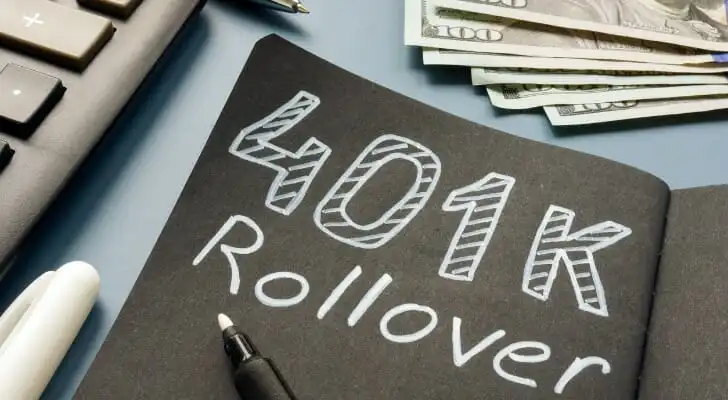The IRS established the 401(k) as a tax-advantaged plan for employees, but in an era when people change jobs far more often than they used to it also has created some confusion. What do you do with this account, that’s supposed to grow over decades, when you change employers? There are a few common options. A financial advisor can offer you valuable insight and guidance on handling tax-advantaged accounts.
What Happens to Your 401(k) When You Leave a Job?
Leaving a job can be a time of significant change, and one of the financial considerations you’ll face is deciding what to do with your 401(k). When you leave an employer, one of the first things you’ll need to consider is what to do with your 401(k). This retirement savings plan, which you may have contributed to over the years, doesn’t just disappear when you leave your employer. Instead, you have several options to consider, each with its own set of advantages and potential drawbacks.
Typically, your former employer will notify you about your 401(k) plan status through a letter or email. This communication will outline your options and any deadlines you need to be aware of. It’s crucial to read this information carefully to understand your choices and avoid any unnecessary 401(k) fees or penalties.
Inaction Can Lead to Automatic Cashing Out
It may seem odd, but you can choose to do nothing. Many employers allow former employees to leave 401(k) accounts invested in the company’s plan. You will not be able to make future contributions to this specific account, but the investment portfolio will otherwise continue as normal. It will grow based on its underlying investments.
You can make changes to the assets based on the rules and preferences of this specific 401(k) account. The existing account manager will continue to oversee these investments. Most companies use an outside financial firm to manage their 401(k) accounts, so your ongoing relationship would be with that firm rather than with your former employer.
Not every employer allows this though. If you have a relatively small amount of money in your account, some employers will close out your 401(k) automatically when you leave.
If you have less than $1,000 in your account, the IRS allows your employer to automatically cash you out of its plan. In this case, you will receive a check for the account balance. Your employer will withhold income taxes, but you will not pay early withdrawal penalties as long as you place this money into a qualified retirement plan, generally an IRA, within 60 days.
If you have between $1,000 and $5,000 in your account, the IRS allows your employer to automatically remove you from their plan but they can’t cash you out unless you request it. Instead they can roll your 401(k) into an IRA. This comes without penalties since an IRA is structurally similar to a 401(k) in terms of tax benefits.
If you have more than $5,000 in your account, many employers will allow you to keep your account in place. However, even then they may apply onerous terms such as high maintenance fees and access restrictions. Plans like this are rarely a good option for retirement savers.
The result is that leaving your 401(k) in place with a former employer is situationally useful. If you are early in your career, this is rarely a strong option mostly because you don’t want to leave a trail of under-funded accounts in your wake. However, if your employer offers particularly good terms, or if you are late in your career, this can be a solid choice.
Fully Cash Out
It is unusual, if not rare, that cashing out your 401(k) is a good idea. The IRS does not create an exception for cashing out your 401(k) after leaving an employer. If you are younger than 59.5 years old, and if you do not meet one of the IRS’ other carve-outs for early 401(k) withdrawals, permanently taking money from any 401(k) account will trigger a 10% penalty on top of all existing income taxes. This applies equally to any account, whether or not you are still employed there.
Rolling Over Funds to Another Retirement Account

Rolling over funds is when you transfer your money from one retirement account to another. In most cases, this is your best option when leaving an employer so that you can continue saving for retirement without having to pay any penalties or early withdrawal fees. Generally speaking, you have two options for a 401(k) rollover:
1. A New 401(k)
If your new employer offers a retirement program, you can transfer the funds from your former employer’s 401(k) into the new one. You may even be able do this even if there is a gap in time between employers, so someone who has a retirement account from a long-ago employer could consolidate their accounts if they chose. The only catch here is that not every employer accepts rollovers from external 401(k) accounts. Make sure that you can do this.
2. An Individual Retirement Account (IRA)
If you don’t have a new 401(k), or don’t want to use it, you can roll your old 401(k) into an IRA account. From a tax perspective, these programs are structurally similar, so the IRS treats it as a continued retirement account rather than a substantive change in your finances. For someone who has had a number of different jobs over the years, this is often a good way to keep your retirement finances in one place.
Rolling over your 401(k) does not account against your annual contribution limit. This is true whether you transfer the money to a new 401(k) account or an IRA.
The specific process for how you will roll over your account depends entirely on your existing 401(k), however, most financial managers handle this similarly. You will need to establish the new account, whether it is a new 401(k) or an IRA. Then you will file a form with your existing 401(k) manager indicating that you would like to roll over the funds, and giving the information for the new account.
The 60-Day Rule
Above, we said that “permanently taking money” from your 401(k) will trigger early withdrawal penalties. because there is an exception for rolling over retirement accounts. Generally speaking, you can directly transfer money from one retirement account into another.
However, you can also rollover your 401(k) account by cashing it out and then depositing that money into a new account (an “indirect rollover”). The IRS allows you to do this tax and penalty-free so long as you deposit the money into a qualified retirement account within 60 days of your withdrawal. If so, the agency considers this a rollover rather than a cash-out. However, after 60 days both income taxes and early withdrawal penalties apply.
Common Mistakes to Avoid When Cashing Out a 401(k)
Cashing out a 401(k) after leaving a job can be tempting, especially if you need quick access to funds, but missteps can lead to significant financial setbacks. Here are a few common mistakes to watch out for:
- Withdrawing without understanding the tax impact: Taking money from your 401(k) before age 59½ usually triggers a 10% early withdrawal penalty in addition to regular income tax. Even if you’re no longer with your employer, these penalties still apply unless you qualify for a specific IRS exception.
- Missing the 60-day rollover window: If you choose an indirect rollover, where the funds are sent to you before being deposited into another retirement account, you must complete the transfer within 60 days. Otherwise, the IRS will treat the money as a distribution, meaning taxes and penalties will apply.
- Failing to check whether your new employer accepts rollovers: Not all 401(k) plans accept funds from a previous employer’s plan. Before initiating a rollover, confirm your new plan will accept it—or consider rolling the funds into an IRA instead.
- Losing track of old accounts over time: With frequent job changes, it’s easy to leave behind small 401(k) balances. Consolidating old accounts or rolling them into a central IRA can make your retirement savings easier to manage and track over time.
Avoiding these mistakes can help preserve your retirement savings and ensure you stay on track for the future.
How to Find an Old 401(k)
If you’ve changed jobs multiple times, there’s a chance you’ve left behind a 401(k) with a former employer. Fortunately, there are several ways to find an old 401(k) account:
- Contact your old HR department: If your previous employer still exists, reach out to their human resources team. They should be able to tell you who manages the plan and how to access your account.
- Use the Department of Labor’s Abandoned Plan Search: If your old employer went out of business or merged with another company, your 401(k) may have been terminated or transferred. The U.S. Department of Labor provides an Abandoned Plan Search tool to help you locate these accounts.
- Check old statements for plan administrator contact info: If you have any paper or digital account statements, they will include the name of the 401(k) plan administrator or financial institution managing the account. Contact them directly to access your funds or initiate a rollover.
Reuniting with an old 401(k) may not only boost your retirement savings, but also allow you to consolidate and better manage your investments going forward.
Bottom Line

The IRS does not suspend its rules on early withdrawals when you leave one job for another. If you cash out your 401(k), you have 60 days to put that money into another qualified retirement account or else penalties and taxes will apply. Other common options include directly transferring your retirement account to another qualifying account or leaving it in place.
Tips on Retirement Accounts
- What’s the right retirement plan for you? Should you roll your 401(k) into another employer’s program or an IRA? What other options might you even have? A financial advisor can provide valuable insight and guidance on this. Finding a financial advisor doesn’t have to be hard. SmartAsset’s free tool matches you with up to three vetted financial advisors who serve your area, and you can have a free introductory call with your advisor matches to decide which one you feel is right for you. If you’re ready to find an advisor who can help you achieve your financial goals, get started now.
- Part of what will help you decide what to do with 401(k) money is how far along you are in reaching your financial goal for retirement. Use this no-cost retirement calculator to get a quick estimate of how you’re doing.
Photo credit: ©iStock.com/Edwin Tan, ©iStock.com/designer491, ©iStock.com/andresr
